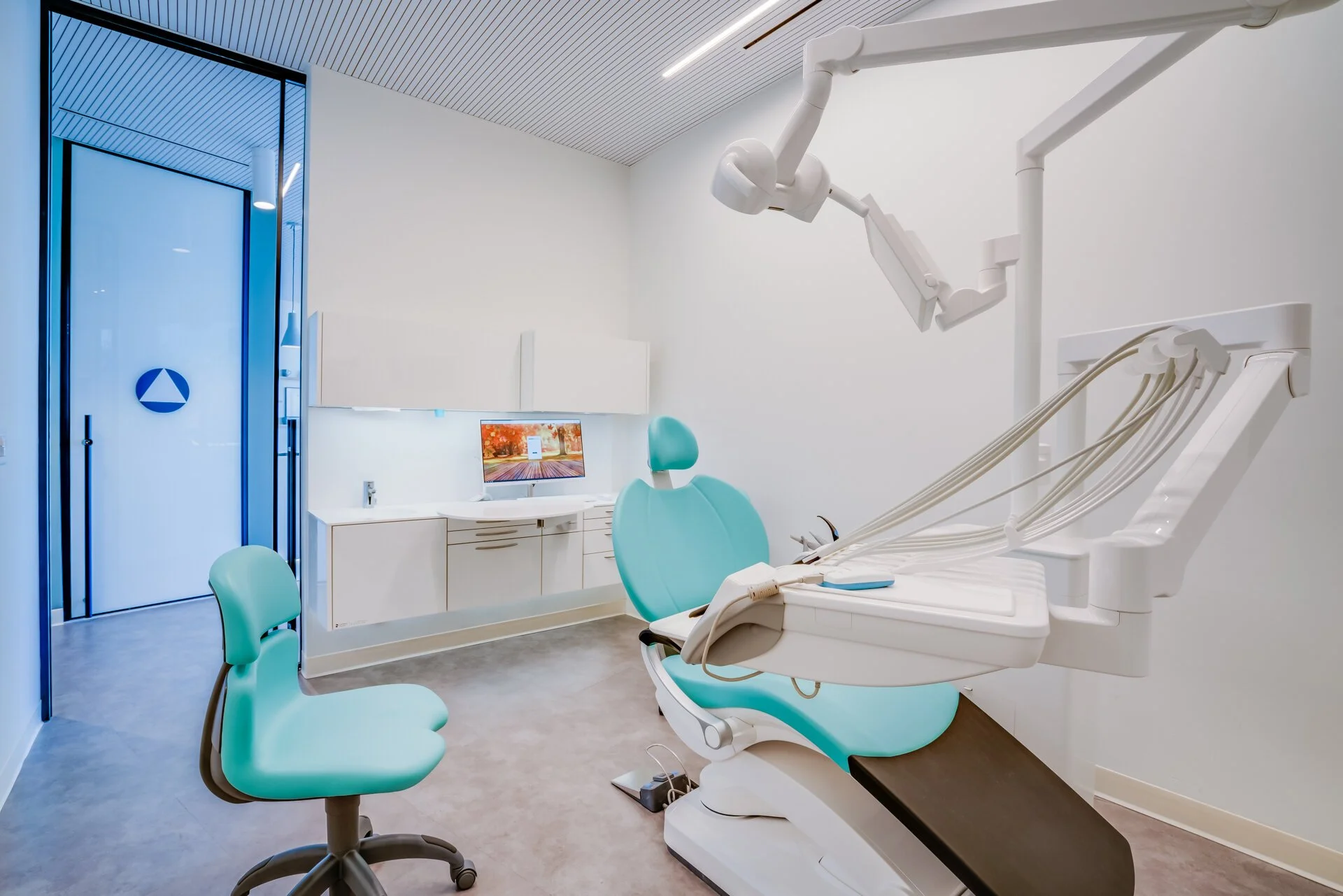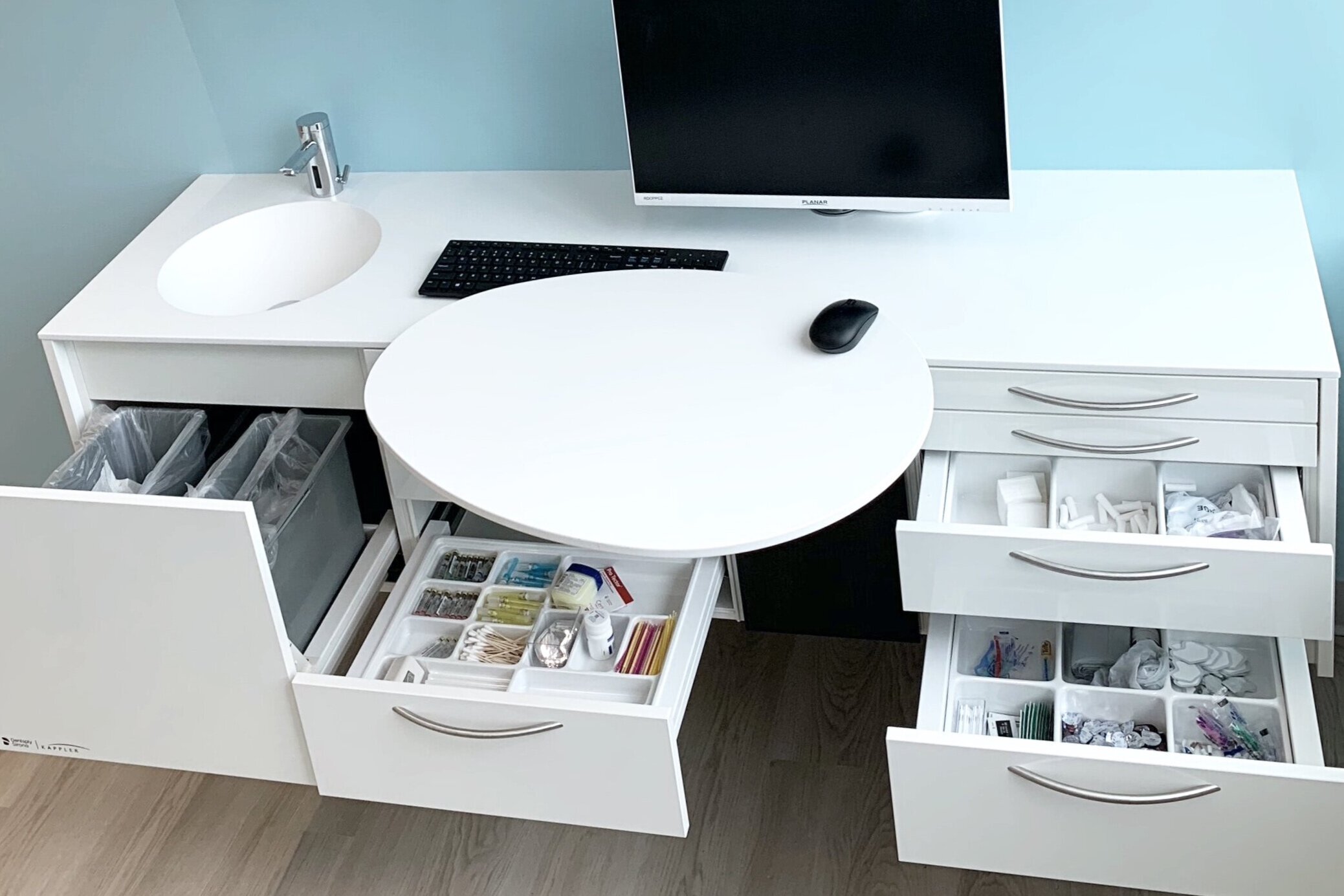Design can be a Moneymaker: Behind the Design at SmileCraft
Most dental offices spend nearly 30% of their production on payroll — usually the single largest expense. But with smart design, you can cut labor waste, increase efficiency, improve patient perception, and make your space feel like a modern, high-tech practice.
That was our goal designing SmileCraft, a startup built from the ground up with workflow, efficiency, and technology in mind. Less than one year in, SmileCraft earned 14 five-star Yelp reviews, with patients repeatedly mentioning how “clean,” “organized,” and “high-tech” the office feels.
Here’s how we designed it — and how the practice is saving over $30,000 per year in labor through smart planning.
✅ Step 1: Centralize Sterilization
We worked with Kappler Design to locate sterilization within 40 feet of every operatory. According to Dental Economics, the average assistant walks into sterilization about 100 times per day. When it’s too far away, that time adds up quickly.
💰 Real impact:
Extra 30 seconds per trip
100 trips/day = 50 minutes wasted/day/assistant
At $20/hour, that’s $5,940/year per assistant
With 2 assistants = $11,880/year saved
✅ Step 2: Use Tubs and Cassettes
SmileCraft standardized their setup using instrument cassettes and color-coded procedure tubs. Instead of hand-washing, ultrasonicing, drying, and sorting every instrument set, they use a Scican instrument washer and central prep area.
💰 Real impact:
40 hours saved/month (Dental Economics)
At $20/hour = $9,600/year saved
✅ Step 3: Single-Entry Operatories
Each operatory features a single private entry and a 6-foot rear cabinet, giving staff more usable storage at the 12 o’clock position. This reduces the need to leave the room and keeps procedures flowing smoothly.
💰 Real impact:
Missed supply trips: 2 minutes/trip × 4 trips/day = $950/year
Faster op turnover with organized tubs/cassettes = $4,276/year saved
Total: $5,226/year saved
✅ Step 4: Leave Working Space Around the Chair
We maintained at least 3 feet around the treatment center and 2 feet behind the rear cabinet, allowing the doctor and assistant to move freely and access the 12 o’clock position without adjusting the chair or patient.
💰 Real impact:
30 seconds saved per patient = ~$1,500/year in doctor time
(Based on 10 patients/day, 20 days/month, $1.25/min value)
✅ Step 5: Standardize Op Layouts
Every operatory is organized the same way — doctor drawer on the left, assistant and hygiene drawers on the right — using Kappler drawer inserts. This eliminates guesswork and increases confidence for the entire clinical team.
💰 Real impact:
1 minute saved per procedure × 6/day = ~$1,875/year
(Based on combined staff time at $1.25/min)
🔢 Total Estimated Annual Labor Savings
Centralized Steri $11,880
Tubs & Cassettes $9,600
Single Entry + Turnover $5,226
Clear Working Space $1,500
Op Standardization $1,875
Total $30,081/year
Want your next office to work this hard for you?




